SKINCARE
Unveiling YOUR CLIENTS’ MOST BEAUTIFUL SKIN
The growth of the chemical peel market is significantly impacted by the increased demand for non-invasive procedures. Indications are that the popularity of these minimally invasive procedures will grow steadily. Have you investigated your salon’s options when it comes to choosing a supplier?
Chemical peels are one of the most popular beauty services on the market because of the treatment’s ability to even out clients’ skin tone, lighten unwanted pigment and even help with surgical scarring. But how well do you understand the service’s ins and outs?
When skin grows back after a chemical peel, it triggers the production of collagen and elastin, which can diminish signs of ageing, including wrinkles, fine lines, ageing spots, uneven skin tone, roughness and dryness.
“Chemical peels are also used to treat pigmentation, sunspots, melasma (a skin condition characteriszed by irregularly shaped patches of brown skin commonly found on the face and neck), and pre-cancerous changes in the skin,” says Dr Imraan Jhetam from SkinMedic. “Chemical peels can be performed on the face, neck, chest, arms, hands, and legs. Although chemical peel may be performed in conjunction with a facelift, it is not a substitute for such surgery.”
It’s possible that all chemical peels will produce some side effects. Only a trained medical (for deeper peels) and skincare therapist should perform a chemical peel treatment course.
Future Market Insights, a market research organisation that covers the world’s largest economies and fastdeveloping markets, indicates a steady growth in the chemical peel market segment over the next 10 years, states that recent years has seen a shift towards therapies that involved less discomfort and little recovery time. Chemical peels are less intrusive than surgical treatments and yield rejuvenated skin with little downtime.
Research show that a trend toward creating formulas that are softer and more focused is emerging. As a result, the negative effects and recovery period linked to chemical peels have decreased. Read the full report and outcomes of the market research here.
Peeling back the layers
After concluding a chemical peel treatment regime, skincare therapists recommend a home care product line that contains similar ingredients and assists in achieving the client’s long-term skincare goals.
Only trained professionals should determine which type of peel may be best for a person’s skin and which products will support healing afterward. People with more severe skin conditions may have better results from professional treatments done by a medical professional, which contain higher concentrations of acid than commercial products.
The National Library of Medicine published a report in October 2023, on the continuing education activity on chemical peels for skin rejuvenation. It states that chemical peels can contain different types of acid:
• Alpha-hydroxy acids (AHA): Some examples include glycolic acid, lactic acid, and citric acid. At-home exfoliating treatments often contain these acids.
• Beta-hydroxy acids (BHA): Salicylic acid is one example, and it is especially beneficial for acne-prone skin and enlarged pores.
• Trichloroacetic acid (TCA): Dermatologists typically use this in medium or deep chemical peels.
• Phenol: This powerful chemical agent is useful in deep peels.
Chemical peels are cosmetic treatments that use acids to exfoliate the skin. The acid removes a uniform amount of damaged skin cells across the treatment area. Chemical peels can affect the epidermis and the dermis. The epidermis is the visible outer layer, and the dermis sits just beneath. This deeper layer contains nerve endings, sweat glands, and hair follicles. All chemical peels remove a controlled amount of skin cells from the epidermis. A stronger peel may also remove a small part of the dermis.
Superficial peels are ideal for skin problems that only affect the epidermis, the skin’s top layer. Generally, a superficial peel does not penetrate the deeper layers. This means that they carry a lower risk of side effects, and the skin tends to recover more quickly. Superficial peels typically heal within a week (seven days). Clients are advised to wear sunscreen during this time.
During a chemical peel, an exfoliant acid is applied—first to the thicker areas of skin, such as the chin, nose, and cheeks, and then to the thinner areas around the eyes and mouth.
Up to five sessions may be necessary before clients see the results they want, with two to five weeks in between treatments.
Professional product ranges add ingredients with anti-ageing properties that optimise results. For instance, Dermafix provides a Progressive Peel range that combines natural moisturisers, keratolytics, and BHA and AHA (fruit acids) in its formulation. This peel exfoliates the epidermis, stimulating new cell regeneration, upregulating collagen synthesis, and stimulating blood flow, all of which improve the skin’s complexion. Due to the customisable steps of the peel protocol, the DermaFix Progressive Peel will show noticeable differences on the skin from the first treatment, with exciting changes as the peel works its magic during the healing process.
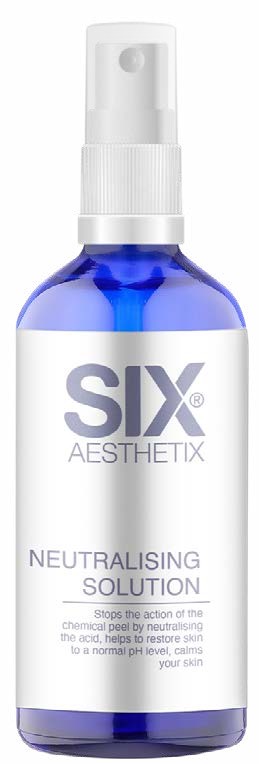
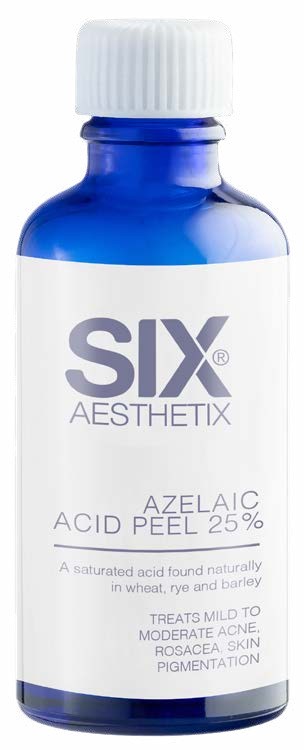
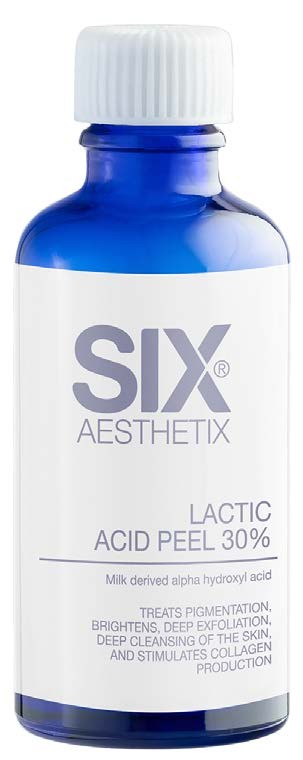
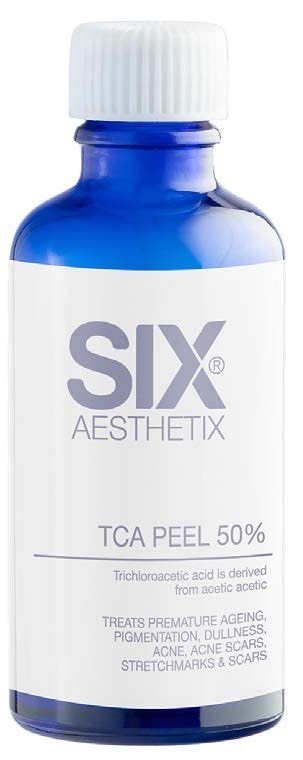
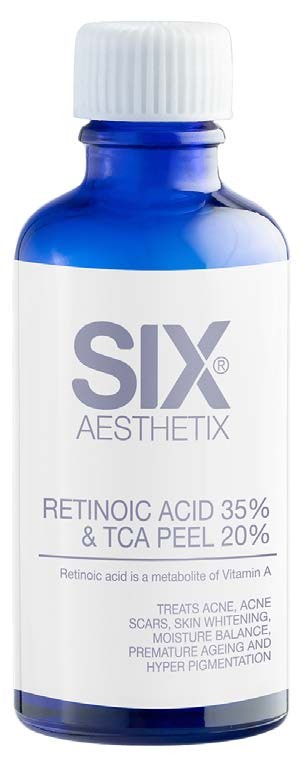
Six Aesthetix offers a TCA peel with retinoic acid, a metabolite of vitamin A that mediates the functions of vitamin A required for growth and development. Retinoic acid, combined with TCA, helps to normalise the skin and spread the solution evenly. It provides similar results to TCA peels but is more controlled and comfortable. The TCA 20% with 35% retinoic acid is a novel and intense skin peeling that is especially effective for treating acne scars, deep wrinkles, and hyperpigmentation. Its properties promote skin renewal and rejuvenation. It is well-suited to treat acne, acne scars, and hyperpigmentation. It brightens the skin while offering moisture balance.
Priming clients and skin for best results
How should I prepare a client’s skin before their treatment?
Connect with your client and complete an in-depth consultation. A thorough discussion with the client will help assess their current skin condition. Healthy skin is less likely to experience adverse reactions to a chemical peel, while dehydrated skin allows chemical peel agents to penetrate further, which can intensify stinging and burning.
Prescribe the proper products to repair barrier function and increase hydration. Having skin in the best possible condition can improve its tolerance to peel and facilitate recovery.
Many clients can benefit from preliminary treatments or products that ‘prime’ the skin. Priming with at-home peels or other exfoliating agents helps to acclimatise the skin and ensure that the client receives the best possible results from their peel. Be sure that clients observe the rules in relation to exfoliant-free days pre-peel so that the skin tolerates it well. This varies according to the type of exfoliant and product.
How can I get optimum results for clients from chemical peels?
“Chemical peels are predominantly used for their exfoliating properties and influence on instigating a mild wound healing response to help with collagen matrix turnover,” says Martine Jarman, aesthetic therapist and founder of SkinGenius Clinic in Warrington in the UK.
“Peels are applied to achieve significant results in common skin concerns such as acne breakouts, excessive oil production, photo-ageing, pigmentation and, more recently, effective results for the treatment of reddening and rosacea-prone skin.
To achieve the best treatment outcome and manage client expectations, it is necessary to go through a client profiling system at least two weeks before a course of peels. Client profiling involves a full skin assessment to determine which group of acids and strengths will be most suitable. Sensitivity testing is essential to check for potential adverse reactions to the choice of acid.
Photographic evidence is necessary to measure results throughout the course.
As with any skincare procedure, the client should be committed to an advanced homecare regime using products that contain the same ingredients as those delivered within the peels.
When you have a range of different protocols rather than one type of peel solution, such as glycolic, you can change the focus of the treatment to target other issues during a course.
How should I decide which type of chemical peel to use on my clients?
Because of their lack of downtime, people often refer to superficial peels as lunchtime peels. They are a great introduction for clients who are new to aesthetics and feel nervous. They’ll feel mild to moderate tingling when the peel is applied, and they’ll only see light shedding of the skin.
Because superficial peels tend to have AHA like glycolic, lactic, mandelic acid, tartaric acid, and BHA like salicylic, it’s usually really safe to get these chemical peels every two-to-four weeks. But because they are so superficial, even with a course of three to six, we’re not going to remove deep lines or pigmentation.
What should I consider when performing peels on people of colour?
“Chemical peels are among the most effective and efficient ways to maintain skin health for darker tones, but require a slightly different approach than with light skins,” says Dija Ayodele, founder of the Black Skin Directory.
“Developing the expertise to successfully and safely treat clients with skin categorised as IV–VI on the Fitzpatrick Scale (IV is defined as skin that rarely burns and always tans, and V and VI as never burns, always tans) will broaden your clientele and reputation as a skin specialist. Here are the six key things to remember when treating these skin types with peels.”
She explains: “Darker skin is more prone to post-inflammatory keloid scarring, which is a contraindication for many treatments that cause trauma to the skin in order to influence regeneration and remodelling of collagen.
“Look at any facial piercings – is there a raised, shiny scar there? Look at the hands, where we often have cuts and nicks – is there any raised, fleshy scarring? If so, ask how it happened and how long it took for the scar to heal.”
Ask about sunscreen use too. “Regardless of skin type, daily sun protection is vital, and even more so when undertaking a course of peels. The use of sun protection must be stressed to the client before treatment and, if necessary, retailed. This is vital, even if the client has very dark skin and thinks they don’t need to use it. A non-compliant client should not be treated with peels,” explains Ayodele.
Ayodele suggests starting with a superficial peel as “in my experience, this is the best route for Fitzpatrick IV – VI,” she says. “Alpha and beta hydroxy acids such as glycolic, lactic, salicylic, mandelic or citric acids give good results either in a pure or blended formulation.
“Clients can have these superficial peels as part of monthly facial treatments to address hyperpigmentation, oil control, pore size, moisture balance, fine lines, radiance and dry, scaly skin. I use lower percentage, high pH formulations until I’m sure the client can tolerate more.”
Ayodele also suggests priming skin for at least four weeks as “this repairs the acid mantle before peeling, increases the effectiveness of the peel and avoids any complications,” she says. “This is very important to avoid causing excess trauma to the skin and post-inflammatory hyperpigmentation.”